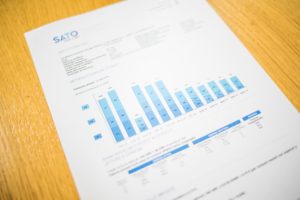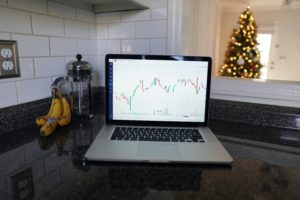[This page contains affiliate links. This means that we may earn a commission if/when you click on or make purchases via affiliate links.]
Foreword
In previous articles, we have gone through what Share Outstanding and secondary public offerings are. Share Outstanding is the total amount of shares issued by a company. A secondary public offering is new shares issuing by a company after their Initial Public Offering (IPO).
Often, companies’ owners would raise money through a secondary offering. But do you know there is another way for companies’ owners to raise money? In this article, I will walk through the approach companies’ owners make to raise money, other than issuing new shares.
What is a stock split and a reverse stock split?
Before talking about the approach companies’ owners make to raise money, other than issuing new shares. There are two terms you need to know, stock split and reverse stock split. They are the basis of the approach.
Stock Split

‘Stock split’ is a term that depicts the action of a company splitting their stocks from 1 to (n) shares. The investment from investors or traders who own shares of the company would not be affected. The only thing that changed is the share amount owned by the investors or traders increases.
Usually, a company doing a stock split wants to attract more investors to invest in their company by lowering the investment threshold. They are doing so since it could reduce their risk when people sell their stocks during a panic.
Reverse Stock Split

‘Reverse stock split’ is conceptually opposite to the stock split. It is a term that depicts the action of a company rescaling their stocks from (n) to 1. Same as the stock split, the investment from investors or traders who own shares of the company would not be affected. The only thing that changed is the share amount owned by the investors or trades decreases.
Usually, a company that is about to be delisted by the NASDAQ or lacks money would do a reverse stock split to raise money either for themselves or the development of their company (illustrated in later part).
Examples and Impact

An example of a stock split, X had bought 100 shares of ABCD company with $100 per share. His initial investment is $100*100=$10000. The ABCD company then did a stock splitting to split their stock from 1 to 5. After the stock split, X owns 500 shares of ABCD, and each of them costs $20 theoretically. His initial investment remains unchanged ($20*500=$10000).

An example of a reverse stock split, Y had bought 500 shares of EFG company with $ 10 per share. His initial investment is $10*500=$5000. The EFG company then did a reverse stock splitting to rescale their stock from 2 to 1. After the reverse stock split, Y owns 250 shares of EFG, and each of them costs $20 theoretically. His initial investment remains unchanged ($20*250=$5000).
Change of Cost basis?
You may wonder why I use the word ‘theoretically’ to describe the stock price of the above examples after a stock split or reverse split. The reasons are as follows:
❗If you are attentive, you may notice that the price of shares often decreases after a stock split and increases after a reverse stock split. It is normal that the price changes after a stock split or a reverse split since the supply and demand change. However, sometimes it won’t happen. In rare cases, when the demand for a stock is much greater than the supply, the stock price could remain at its initial price or even higher after a stock split, vice versa.
❗If you are attentive, you may notice that the price of shares often decreases after a stock split and increases after a reverse stock split. However, the price will not spike or tumble immediately since it still depends on the supply and demand. If the demand of a stock is much stronger than the supply, the stock price could remain at its initial price or even higher after a stock split, vice versa.
(More about the relationship between stock price and Supply and Demand)
How companies’ owners raise money through reverse stock splitting?
After understanding the basics of stock splitting and reverse stock splitting, let’s get back to the question, how do companies’ owners raise money through reverse stock splitting?
Often, companies that lack capital would apply for a reverse stock split. After the approval, they would prepare press releases (good news) and release them on or before the scheduled reverse stock split date. If the price of their stock pump due to the press release, they would sell some of their shares to raise money. Otherwise, nothing happens except the stock rescaling.
Procedure to make stock split/reverse stock split (done by a company)
1️⃣ Apply for a stock split/reverse stock split (paperwork to the SEC)
2️⃣ Wait for Approval
3️⃣ Announcement of stock split/reverse stock split (record date and split date)
4️⃣ Stock split/reverse stock split on the date scheduled
All you need to. know is the Record Date and the Split date. The record date is the date that companies record whose stock would be split on the split date. You should buy the stock before the record date if you want to participle in the stock split.
Potential Strategy
As previously mentioned, companies that lack capital would prepare press releases (good news) and release them on or before the scheduled reverse stock split date.

Swing traders who note a reverse stock split of a company could then make predictions to the company stock price base on press releases and thereby make a profit.
Using Benzinga Pro to collect information
You may want to know how you could collect the data of a company easily and conveniently. Benzinga Pro is one of the best platforms I have used that provide live-time news feed and data of different companies. It also contains multiple functions such as alerts, a calendar for important dates (stock split/reverse stock split date and more), screeners, scanners, live time stock movers.
You could take a look at the Benzinga Pro with this link.

And I will write a review of the Benzinga Pro later. (Link will be added later)
Learning the strategy with Humbled Trader
Apart from the tool you need, education is another essential thing when it comes to stock trading. Humbled Trader has taught the strategy that I have mentioned in this post. Here is the video.
If you want to learn more from her and her strategies, I suggest you go to her website and check out the videos that she had published. Some of them are free and some of them are not (require subscription).
Final Thought
Stock split and reverse stock split are some of the basic terminologies that you need to know when it comes to investing or trading. Make sure you understand both of them. Hope you find this post helpful.
[Next Lesson: Trading halts]





